Mobile Flagship Phone Cameras 2021 H1 Review: Megapixels & Telephotos
by Andrei Frumusanu on June 21, 2021 9:30 AM EST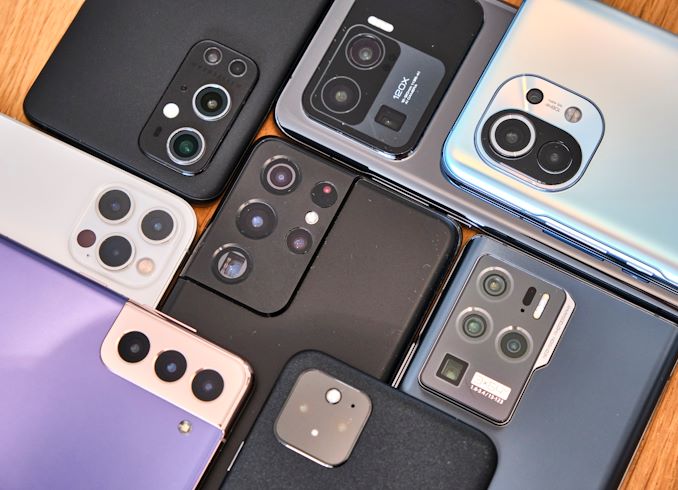
It’s been well over a year now since our last extensive camera round-up article, and it’s also been a few months now since the release of most of 2021’s flagship device releases, and it’s time to take a snapshot of the current smartphone photography landscape.
2020 and 2021 have been years where smartphone photography has changed quite a lot. The biggest change has been in the hardware that vendors are employing in their flagship camera systems, and the trend has been towards more exotic sensor solutions with high megapixel capabilities (with the ability to bin down to lower res, larger effective pixels), and more intricate optical systems, particularly on the telephoto end. While these trends don’t hold true for every device out there today, it’s actually the norm amongst most vendors rather than the exception.
Whilst the devices tested today have mostly been out for quite some time now, some even months or the better part of the year, being able to re-test cameras a bit of time after their releases is also an important step in evaluating the various vendors’ advancements in software updates. Unfortunately, especially amongst the many Android vendors, the camera software always seems to be the least polished aspect of new flagships, and it’s generally become the norm nowadays that devices such as Samsung’s Galaxy series perform quite differently a few months after their initial firmware and review cycle.
I wanted to take the opportunity to revisit some of those well-known devices today in lush sunny spring colours, instead of grey winter scenes, but to also visit a slew of new devices we haven’t had time to fully review yet. I’ll be briefly going over the device line-up and cover their camera setups, and what makes them stand out from the rest of the crowd:
Apple iPhone 12 Pro
| Apple iPhone 12 Pro | |||||||||
| Optics | Sensor | ||||||||
| 35mm eq. FL |
FoV (H/V/D) |
Aperture |
OIS | Resolution | Pixel Pitch |
Pixel Res. |
Sensor Size |
||
| Ultra-Wide | 13.23 | 105.2° 88.9° 117.1° |
f/2.4 | ✗ | 12.2M (4032 x 3024) |
1.0µm | 94.0″ | 1 / 3.17" 4.03mm x 3.02mm 12.19mm² |
|
| Main (Wide) | 25.77 | 67.8° 53.5° 80.0° |
f/1.6 | ✓ | 12.2M (4032 x 3024) |
1.4µm | 60.5″ | 1 / 2.26" 5.64mm x 4.23mm 23.89mm² |
|
| Telephoto | 51.54 | 37.1° 28.3° 45.5° |
f/2.0 | ✓ | 12.2M (4032 x 3024) |
1.0µm | 33.2″ | 1 / 3.17" 4.03mm x 3.02mm 12.19mm² |
|
Apple’s iPhone 12 Pro is amongst the “oldest” devices in the line-up, being released last October. Apple’s latest generation camera setup isn’t as much defined by the hardware characteristics of its modules, as much as it is by the software and image processing the latest iPhones take advantage of.
In terms of hardware, the iPhone 12 Pro is using a more conventional trio of camera modules, including a ultra-wide angle, wide angle (or main camera as I tend to call it), and a short telephoto unit at respectively 13.2, 25.7 and 51.5mm equivalent focal lengths. Optics for the modules vary quite a bit, with the main camera seeing an upgrade this generation through a new larger aperture f/1.6 lens system that allows for more light gathering capabilities compared to its predecessors.
The three cameras use 12.2MP sensors, with the main module using a 1/2.26” class unit with by today’s standards, medium sized 1.4µm pixels – the UWA and telephoto use smaller 1/3.17” sized sensors with 1.0µm pixel pitches. In terms of actual sensor sizes this actually translates to the main camera being able to roughly have almost twice the area.
A general note on the specification tables:
There’s apparently been some confusion in regards to the specs of Apple’s camera modules and sensor sizes, going as far as competitors wrongly misquoting the devices’ hardware specifications in presentations. The confusion lies in the fact that Apple tends not to actually present the actual numbers officially, as well as the fact that there’s been inconsistency in the way that vendors present their sensor sizes in inches. One has to note that the typical sensor size metric in fractional inches diagonal isn’t actually a real physical measurement of the sensor, but rather a value of the “optical format”, where the quoted size is actually a margin factor larger than the actual sensor. In the past we’ve had some inconsistencies in the part of Omnivision and Sony on this margin factor, leading to some apples-to-oranges quotes in optical format sensor size figures. For this article, I’m quoting all optical format sizes in a standardised 1.5x margin factor for consistency – which is matches with the PR of most camera sensors today.
Beyond the optical format size, I’m also quoting the actual physical active capture area dimensions and surface area in millimetres – the actual surface area figure will probably the best way to actually compare sensor sizes against each other.
As many vendors also don’t officially quote the focal lengths of their camera modules, I’ve also went ahead and calculated the actual 35mm equivalent focal lengths of the various devices listed today. Conversely, some vendors state focal lengths but don’t state the field of view, so I also added in those metrics as horizontal, vertical, and diagonal field of view values. Most companies quote the diagonal in their specs, but because we don’t tend to take pictures at 45° device angles, the long edge (horizontal) field of view figure is the one most applicable and familiar to the real world.
Besides the usual sensor specifications like resolution and pixel pitches, I’m also adding in the maximum theoretical optical resolving power for the modules in terms of arcseconds per pixel, in order discuss a few of the different hardware approaches vendors are taking nowadays. As a reminder for those unfamiliar, an arcsecond is 1/3600th of a degree, and given the field of view and the resolution we can simply determine the resolving power of the camera module.
Google Pixel 5
| Google Pixel 5 | |||||||||
| Optics | Sensor | ||||||||
| 35mm eq. FL |
FoV (H/V/D) |
Aperture | OIS | Resolution | Pixel Pitch |
Pixel Res. |
Sensor Size |
||
| Ultra-Wide | 16.53 | 92.6° 76.3° 105.2° |
f/2.2 | ✗ | 16.2M native (4650 x 3488) 12.2M scaled (4032 x 3024) |
1.0µm | 71.7″ | 1 / 2.75" 4.65mm x 3.48mm 16.21mm² |
|
| Main (Wide) | 26.87 | 65.6° 51.6° 77.7° |
f/1.73 | ✓ | 12.2M (4032 x 3024) |
1.4µm | 58.6″ | 1 / 2.26" 5.64mm x 4.23mm 23.89mm² |
|
Following the iPhone, the Google Pixel 5 is the second oldest device in the list, being released last November. In terms of hardware, Google here is also quite conservative as the sensors themselves haven’t changed compared to the Pixel 4 in 2019. The ultra-wide however is now for Google, although it’s not as aggressive at a 16.5mm equivalent focal length. What a bit weird is that Google employs a 16.2MP sensor for the UWA, however this resolution is only available for RAW pictures as general photography will have the phone downscale images to 12.2MP shots. The main sensor remains a “normal” 1.4µm 12.2MP unit with standard optics.
Google’s strengths have been in software processing, and the Pixel 5 introduces a newer HDR+ algorithm that is able to maintain more shadow details in shots, improving dynamic range and thus still competing quite well compared to devices with newer sensors, at least in good light conditions. The phone is the only device in the line-up lacking a telephoto solution, solely relying on multi-frame super-resolution upscaling from the main module to magnify subjects.
OnePlus 9 Pro
| OnePlus 9 Pro | |||||||||
| Optics | Sensor | ||||||||
| 35mm eq. FL |
FoV (H/V/D) |
Aperture | OIS | Resolution | Pixel Pitch |
Pixel Res. |
Sensor Size |
||
| Ultra-Wide | 14.79 | 99.0° 82.5° 111.3° |
f/2.2 | ✗ | 50.3M native (8192 x 6144) 12.6MP binned (4096 x 3072) |
1.0µm 2.0µm |
48.4″ 87.0″ |
1 / 1.56" 8.19mm x 6.14mm 50.33mm² |
|
| Main (Wide) | 23.40 | 72.9° 58.1° 85.5° |
f/1.88 | ✓ | 48.12M native (8000 x 6016) 12.0MP binned (4000 x 3008) |
1.22µm 2.24µm |
32.8″ 65.7″ |
1 / 1.43" 8.96mm x 6.73mm 60.37mm² |
|
| Telephoto | 78.53 | 24.9° 18.8° 30.8° |
f/2.4 | ✓ | 8.0MP (3264 x 2448) |
1.0µm | 27.4″ | 1 / 3.26" 3.26mm x 2.44mm 7.99mm² |
|
The OnePlus 9 Pro brings a new camera solution for the company’s new flagship. At the ultra-wide angle, we’re seeing a new 50.3MP native sensor that bins down to normal 12.6MP images, and features relatively large 1.0µm native and 2.0µm effective binned pixels. This actually results in a quite large 50.33mm² sensor area that’s actually bigger than most normal primary camera sensors of other devices. The module also is claimed to feature a low-distortion moulded lens system to allow for rectilinear optically corrected images, where as usually these corrections happen on a software level which degraded image quality.
The primary camera also uses a new 48MP sensor with 1.22µm native pixels, binning down to 12MP and 2.24µm pixels. The phone has a slightly wider than usual focal length at 23.4mm (generally I’m a fan of this), and an overall respectable aperture of f/1.88. As a 1/1.43” sensor, it’s not the largest amongst devices today, but it’s definitely above the norm of past few years.
As a telephoto, the OP9Pro employs a tiny 8MP sensor with 1.0µm pixels for 3x optical magnification / 78.5mm FL and f/2.4 optics. Generally, the weird thing about this solution is that it doesn’t give that much more resolving power than the main camera, as one pixel is 27.4 arcseconds on the telephoto vs 32.8 arcseconds on the regular module.
Xiaomi Mi 11
| Xiaomi Mi 11 | |||||||||
| Optics | Sensor | ||||||||
| 35mm eq. FL |
FoV (H/V/D) |
Aperture | OIS | Resolution | Pixel Pitch |
Pixel Res. |
Sensor Size |
||
| Ultra-Wide | 15.71 | 95.8° 78.7° 108.0° |
f/2.4 | ✗ | 13.1M (4208 x 3120) |
1.12µm | 81.9″ | 1 / 2.73" 4.71mm x 3.49mm 16.46mm² |
|
| Main (Wide) | 24.57 | 70.3° 55.7° 82.7° |
f/1.85 | ✓ | 108.6M native (12032 x 9024) 27.1M binned (6016 x 4512) |
0.8µm 1.6µm |
21.0″ 42.1″ |
1 / 1.33" 9.62mm x 7.21mm 69.49mm² |
|
The Mi 11 features the same sensor setup as in the Mi 10 in 2019, and is characterised as being one of the first super-high-res smartphone devices. The main camera sensor has a 108MP native resolution and bins down to 27MP regular shots in a 4:1 fashion. It’s also one of the first “extra-large” sensors of a 1/1.33” format and has an area that’s almost 3x the size of most “regular” phone sensors as on the iPhone 12 Pro or the Pixel 5. The super high resolution of 108MP allows it to have pixel resolving power of 21 arcseconds even though it’s still a wide-angle lens of 24.57mm focal length, so we don’t actually miss not having a telephoto module on the phone as cropping in does a very good job.
The ultra-wide angle of 13MP is nothing too particularly special, but it does its job in well-lit situations.
Xiaomi Mi 11 Ultra
| Xiaomi Mi 11 Ultra | |||||||||
| Optics | Sensor | ||||||||
| 35mm eq. FL |
FoV (H/V/D) |
Aperture | OIS | Resolution | Pixel Pitch |
Pixel Res. |
Sensor Size |
||
| Ultra-Wide | 12.99 | 106.3° 90.0° 118.0° |
f/2.2 | ✗ | 48.0M native (8000 x 6000) 12.0MP binned (4000 x 3000) |
0.8µm 1.6µm |
47.8″ 95.6″ |
1 / 2.00" 6.40mm x 4.8mm 30.72mm² |
|
| Main (Wide) | 23.01 | 73.9° 58.9° 86.5° |
f/1.95 | ✓ | 49.9M native (8160 x 6120) 12.5MP binned (4080 x 3060) |
1.4µm 2.8µm |
32.6″ 65.2″ |
1 / 1.12" 11.42mm x 8.56mm 97.88mm² |
|
| Telephoto | 119.07 | 16.55° 12.45° 20.60° |
f/4.1 | ✓ | 48.0M native (8000 x 6000) 12.0MP binned (4000 x 3000) |
0.8µm 1.6µm |
7.45″ 14.9″ |
1 / 2.00" 6.40mm x 4.8mm 30.72mm² |
|
The Mi 11 Ultra is a higher-end sibling of the Mi 11, but comes with a completely different camera setup that can be described as quite monstrous, both in specs, as well as the large camera hump the phone showcases.
On the ultra-wide, Xiaomi here uses a completely different setup, using a 48MP sensor that bins down to 12MP. It’s almost double the size of that of the Mi 11 as a 1/2.0” unit and 30.7mm², and the optics also showcase the widest ultra-wide characteristics of any of the phones tested today with a focal length of 12.99mm equivalent.
The main camera sensor is a 1/1.12” beast, coming in at a massive area of 97.9mm², by far the largest sensor amongst any smartphone today. The sensor features 1.4µm native pixels at 49.9MP, or bins down to 12.5MP in regular use with 2.8µm effective pixels. The optics are a bit darker than what we’re used to at f/1.95, but I actually think that’s a good choice as it’s very hard to design optically performant large aperture lenses while still keeping the size in check for large sensors such as the one used on the Mi 11 Ultra.
The telephoto module uses the same sensor as the ultra-wide, but housed inside of a periscope style telephoto lens module. It has a focal length of 119mm equivalent, and because of that has to make due with a darker f/4.1 aperture. This system is most similar to what we’ve seen in the Galaxy S20 Ultra last year. Because it’s a quad-Bayer sensor with 48MP resolution, in the native mode, the Mi 11 Ultra actually in theory has the best resolving power of any smartphone today at only 7.45 arcseconds per pixel – although this would be valid only for luminance information as the regular Bayer sensor of the S21 Ultra would have better colour resolution.
Samsung Galaxy S21 (Exynos)
| Samsung Galaxy S21 | |||||||||
| Optics | Sensor | ||||||||
| 35mm eq. FL |
FoV (H/V/D) |
Aperture | OIS | Resolution | Pixel Pitch |
Pixel Res. |
Sensor Size |
||
| Ultra-Wide | 13.50 | 104.1° 87.8° 116.1° |
f/2.2 | ✗ | 12.2M (4032 x 3024) |
1.4µm | 93.0″ | 1 / 2.27" 5.64mm x 4.23mm 23.89mm² |
|
| Main (Wide) | 25.77 | 67.8° 53.5° 80.0° |
f/1.8 | ✓ | 12.2M (4032 x 3024) |
1.8µm | 60.5″ | 1 / 1.76" 7.25mm x 5.44mm 39.50mm² |
|
| 2nd Main | 27.62 | 64.2° 50.4° 76.2° |
f/2.0 | ✓ | 64.1M native (9248 x 6936) 12.2M scaled (4032 x 3024) |
0.8µm | 25.0″ | 1 / 1.73" 7.39mm x 5.54mm 41.05mm² |
|
The Samsung Galaxy S21 is a quite familiar device in terms of its camera capabilities in that it’s the exact same setup we’ve seen on the S20. The ultra-wide and main camera modules are pretty much boring but extremely solid contenders, featuring regular Bayer sensors of relatively large pixels sizes at 1.4µm and 1.8µm, both at 12.2MP.
What’s still special about Samsung’s S20 and S21 series is a very unique 64MP secondary wide-angle camera. It’s only a bit narrower at 27.6mm focal length versus the 25.7mm of the main camera module, which is unusual. More-so unusual is the fact that the large 1.73” 64MP sensor actually isn’t a quad-Bayer unit as you’d expect from such high-res units, but a traditional Bayer sensor with extremely high resolution. This actually results in a pixel resolving power of 25 arcseconds, which is actually better than the 2x optical telephoto of the iPhones or the 3x optical of the OP9Pro’s low-res sensor. Because it achieves this high resolution at a comparatively wide field of view, it means that magnification relative to the main sensor are still flawless in terms of cropped and scaled down 12MP resolution images up to 2.53x, and as we had experienced in our S20 and S21 reviews, this is a major strength point of the phone where it can trump essentially many other devices on the market.
Samsung Galaxy S21 Ultra (Exynos & Snapdragon)
| Galaxy S21 Ultra | |||||||||
| Optics | Sensor | ||||||||
| 35mm eq. FL |
FoV (H/V/D) |
Aperture | OIS | Resolution | Pixel Pitch |
Pixel Res. |
Sensor Size |
||
| Ultra-Wide | 13.60 | 103.7° 87.3° 115.7° |
f/2.2 | ✗ | 12.0M (4000 x 3000) |
1.4µm | 93.3″ | 1 / 2.29" 5.60mm x 4.20mm 23.52mm² |
|
| Main (Wide) | 24.17 | 71.2° 56.5° 83.7° |
f/1.8 | ✓ | 108.0M native (12000 x 9000) 12.0M binned (4000 x 3000) |
0.8µm 2.4µm |
21.4″ 64.1″ |
1 / 1.33" 9.60mm x 7.20mm 69.12mm² |
|
| Telephoto | 70.04 (4:3) |
27.77° 21.01° 34.34° (4:3) |
f/2.4 | ✓ | 10.87M native (3976 x 2736) 9.99M 4:3 crop (3648 x 2736) 12M scaled (4000 x 3000) |
1.22µm | 27.4″ | 1 / 2.72" 4.85mm x 3.33mm 16.19mm² |
|
| 2nd Telephoto | 238.16 (4:3) |
8.31° 6.24° 10.38° (4:3) |
f/4.9 | ✓ | 10.87M native (3976 x 2736) 9.99M 4:3 crop (3648 x 2736) 12M scaled (4000 x 3000) |
1.22µm | 8.21″ | 1 / 2.72" 4.85mm x 3.33mm 16.19mm² |
|
The Galaxy S21 Ultra has been a major new device for Samsung this year. On the ultra-wide angle, it’s a similar setup as on the S21, although the Ultra uses a different sensor manufacturer and is a few pixels smaller, but otherwise it’s quite identical in most aspects.
The main camera continues to feature a 108MP sensor, although this year Samsung iterated with a new generation which introduced staggered HDR sensor captures (The Mi 11 and OP9Pro should also have this). In terms of theory, Samsung should have the same resolution advantages as the Mi 11, although because the S21U uses a 12MP colour filter versus a 27MP colour filter on the Mi 11 sensor, that might be a reason why Samsung doesn’t like to use the native resolution of this unit in almost any capture scenario. This is quite a pity as beyond the improved texture retention in 12MP mode, it really invalidates most of the benefits of the high-res sensor – well there’s 8K video recording in a very tight crop, but I generally don’t view that as an advantage.
New to this year’s Ultra is an intermediary telephoto at 70mm focal length (3x versus the main module). It’s only 10MP but does offer 1.22µm pixels. It’s not overly impressive but does the job to bridge the gap in the focal length capabilities of the phone.
Beyond 70mm, we have to zoom into 238mm to reach the “10x” telephoto module. It’s the same 10MP sensor as on the 3x/70mm module, but housed inside of a periscope optics design with f/4.9 aperture. As we’ve reviewed in the past, quality is extremely good at 10x and beyond, but the gap between 5x and 9.9x is pretty horrendous. Compared to the Mi 11 Ultra, the S21 Ultra has worse luminance resolution per pixel, although colour resolution should be better on the Galaxy.
We’re also retesting both Snapdragon and Exynos variants of the S21 Ultra to check again how far Samsung has been able to update the devices from a software image processing standpoint.
ZTE Axon 30 Ultra
| ZTE Axon 30 Ultra | |||||||||
| Optics | Sensor | ||||||||
| 35mm eq. FL |
FoV (H/V/D) |
Aperture | OIS | Resolution | Pixel Pitch |
Pixel Res. |
Sensor Size |
||
| Ultra-Wide | 13.85 | 102.6° 86.4° 114.8° |
f/2.2 | ✗ | 64.2M native (9248 x 6944) 16.0M binned (4624 x 3472) |
0.7µm 1.4µm |
40.0″ 79.9″ |
1 / 1.98" 6.47mm x 4.86mm 31.46mm² |
|
| Main (Wide) | 26.11 | 67.1° 52.9° 79.3° |
f/1.6 | ✓ | 64.2M native (9248 x 6944) 16.0M binned (4624 x 3472) |
0.8µm 1.6µm |
26.1″ 52.2″ |
1 / 1.73" 7.39mm x 5.55mm 41.09mm² |
|
| 2nd Main | 31.45 | 57.7° 44.9° 69.1° |
f/1.9 | ✗ | 64.2M native (9248 x 6944) 16.0M binned (4624 x 3472) |
0.7µm 1.4µm |
22.4″ 44.9″ |
1 / 1.98" 6.47mm x 4.86mm 31.46mm² |
|
| 2nd Telephoto | 123.1 | 16.01° 12.04° 19.94° |
f/4.9 | ✓ | 7.99M native (3264 x 2448) 16.0M scaled (4624 x 3472) |
1.0µm | 17.7″ | 1 / 3.92" 3.26mm x 2.44mm 7.99mm² |
|
As a wildcard device in the line-up, I’m also including ZTE’s Axon 30 Ultra. It’s actually a very interesting phone with a unique camera setup: the ultra-wide, main (wide), and a S21-like secondary wide-angle unit featuring all 64MP sensor, alongside a small periscope telephoto module.
The ultra-wide and the secondary wide-angle feature 64.2MP quad-Bayer sensors that bin down to 16MP in regular shots. These are 0.7µm pixels and thus the sensors aren’t actually that large in terms of their 1/1.98” formats, and we’d generally want to keep them in their binned down mode most of the time. The ultra-wide has 13.85mm eq. optics with f/2.2, while the secondary wide has 31.45mm eq. f/1.9 optics. The latter is quite unusual – it’s similar to the S21’s secondary, but due to the quad-Bayer setup and the lack of OIS, isn’t quite as useful. ZTE calls this a portrait lens, though it’s a quite shorter focal length than what we’re used to for portrait photography.
The main camera is also 64.2MP, though this is a larger sensor with 0.8µm pixels and a 1/1.73” format. It still bins down to 16MP for regular shots, and features OIS with 26.11mm eq. optics with f/1.6 aperture.
Finally, the telephoto module is a tiny 8MP sensor with 1.0µm pixels. As a 1/3.92” format as only 7.99mm² area it’s quite small, but the optics have a long 123.1mm focal length, although the aperture is also dark at f/4.9. Still, at 17.7 arcseconds per pixel it’s a strong resolver, even though not quite competing against the likes of the Mi 11 Ultra or S21 Ultra.
Reference Camera - Fujifilm X-T30
| Fujifilm X-T30 | |||||||||
| Optics | Sensor | ||||||||
| 35mm eq. FL |
FoV (H/V/D) |
Aperture | OIS | Res. | Pixel Pitch |
Pixel Res. |
Sensor Size |
||
| Std Zoom (XF18-55) |
27.0 - 82.5 | 66.2° - 24.08° 46.9° - 16.18° 76.2° - 28.75° |
f/2.8 - 4.0 | ✓ | 25.9M (6240 x 4160) |
3.76µm | 38.2″ - 13.9″ |
APS-C 1.76" 23.46mm x 15.64mm 366.98mm² |
|
| Tele Zoom (XC50-230) |
75.0 - 345.0 | 26.4° - 5.83° 17.8° - 3.89° 31.5° - 7.01° |
f/4.5 - 6.7 | ✓ | 15.2″ - 3.37" | ||||
Evaluating cameras in smartphones is sometimes a deeply subjective matter unless you have a complex measurement setup to empirically test things such as colour accuracy or dynamic range capabilities. The other option is to have a reference camera, which is the route I started to take last year (and frankly, it’s cheaper).
Fujifilm is in general well regarded for its colour science and the X-T30 is generally measured to have one of the most accurate colour reproductions out there. The sensor is a 26.1MP APS-C type with a 3.77µm pixel pitch. It’s a 2018 generation sensor so from a smartphone industry evolution standpoint it’s quite ancient, however still the best performing sensor of its class in the camera world (at this time). I’m using a mid-class standard zoom in the form of the XF18-55 and a low-end telephoto zoom in the XC50-230. Unfortunately, I don’t have an ultra-wide-angle lens, so that’s missing as a comparison.
The sample images were taken as RAWs and processed in Capture One. I’ve adjusted exposure to recover shadows and highlights to be as accurate as I could based on the real conditions of the scenes. Colours or colour balance have not been edited.
Viewing Conditions Remarks
For the sake of data-traffic, the article showcases lower-resolution thumbnails, however the full resolution image can be opened by simply clicking on the images. All phone images are pulled directly off the devices and uploaded without modification in their original formats. Default thumbnails are of the X-T30 - clicking on the labels below the image changes the thumbnail and its corresponding original image. For the best viewing experience, a brighter monitor with a wide gamut support and browser capable of colour management is recommended (Fujifilm and iPhone captures are in wide gamut – the Android devices are still only limited to sRGB).
Goal of the Article
Before we proceed, I also wanted to note some of the goals here: this is merely meant to be a technical analysis and comparison of the resulting picture quality and results of the various device’s camera systems, within the default OEM camera applications. This means we’re looking at the combined hardware and software processing of the phones in their mostly default states, as that’s what the majority of consumers will be experiencing.
In terms of subject matters, I heavily lean more on landscape / static subjects simply because of practical reasons and the sheer number of devices and camera modules means that a scene takes 10-15 minutes to go through, so in my view static scenes are the only way to go least we go hire and torture a model for the job.
Finally, I’m also limiting the article to just still picture photography, again this is simply to reduce the scope of the piece as due to the number of devices and work to integrate the results into articles is already extensive.
As always – the current results and images are also just a mere snapshot in time at the time of capture (May 31st), and only representing the results of the various device’s camera performance as represented in their latest firmware updates available. As we’ll see many devices will have changed their camera performance compared to what we initially reviewed a few months ago – and many devices will still likely change their processing over their lifetimes.


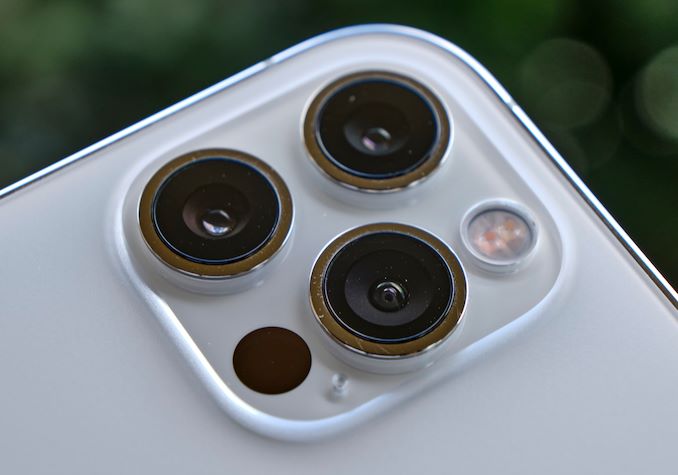
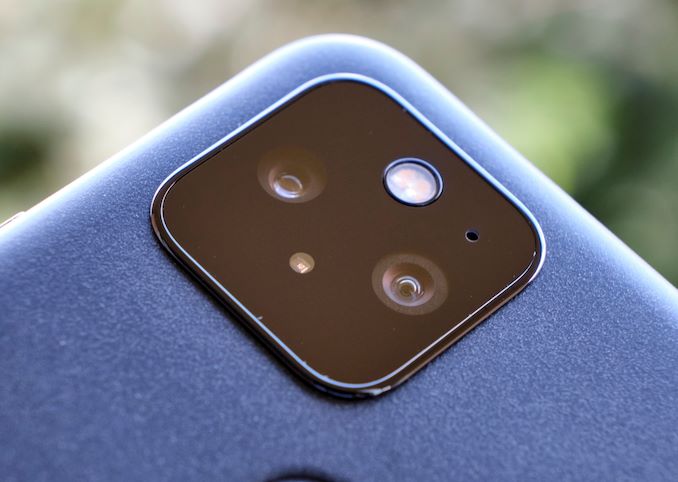
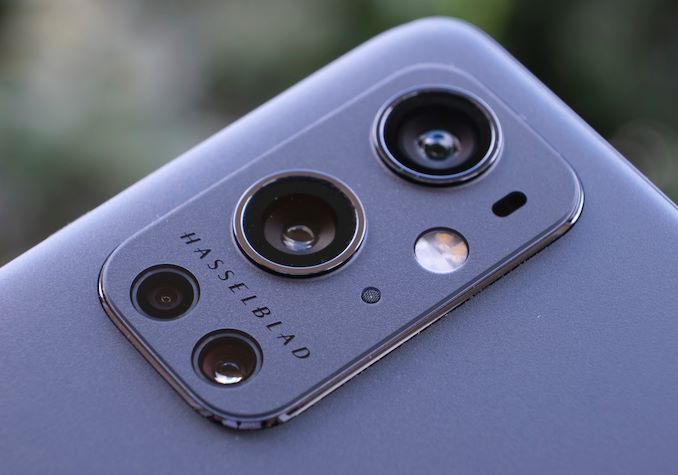
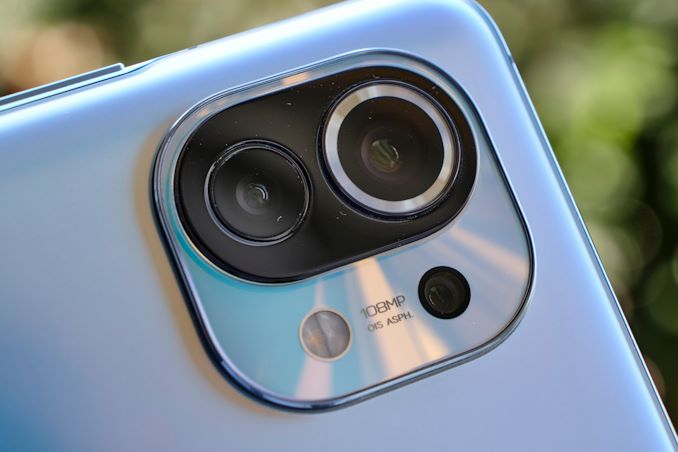

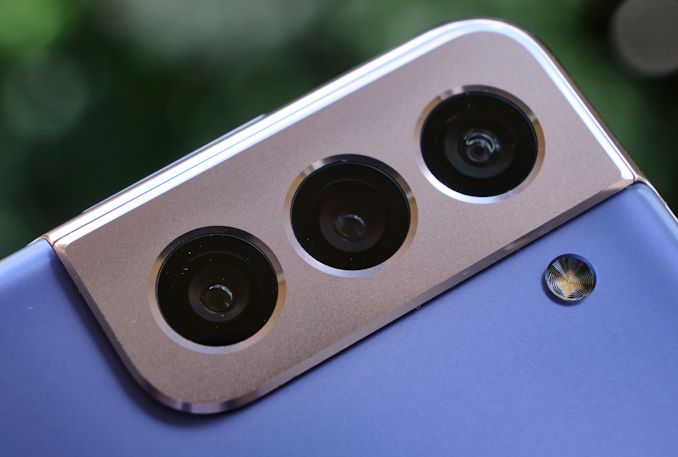
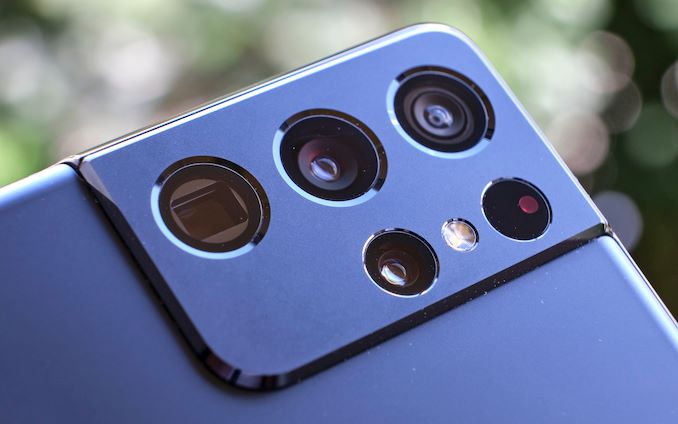
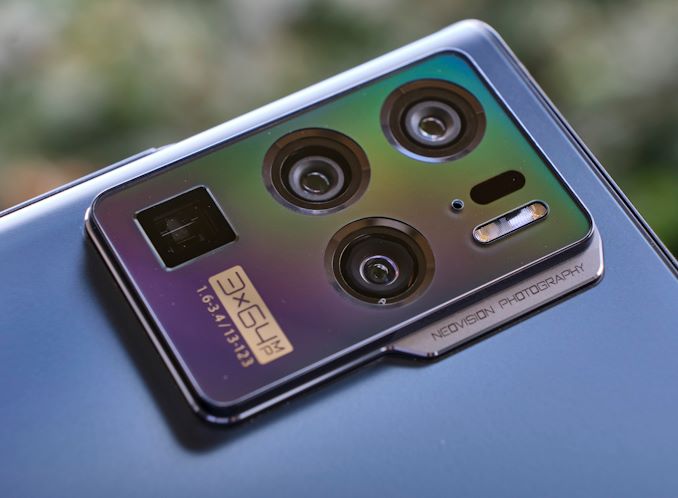









60 Comments
View All Comments
dragosmp - Tuesday, June 22, 2021 - link
Awesome roundup, happy you took the time to explain the arc-second method of judging resolution and FoV all in one, it makes so much sense. I did studied optics once upon a time in high-school, makes it easier to understand. Looking at the number of comments it may just be this article didn't captivate the attention of the readers, big shame. In any case I hope to see this article receive follow-ups as new phones get released; maybe a Bench section could be added to compare effective resolution of various phones.Was looking to upgrade my ageing P20 Pro and I am in the habit of buying retail and am not ready to pay crazy money. Looks like the Mi 11 (Ultra) would be the best all-rounder quality/$ out there?
sonofgodfrey - Tuesday, June 22, 2021 - link
If you really want to challenge a phone camera, try taking a nice picture of a full (or almost full) moon.Haven't found one yet that can do it.
Medstar1 - Wednesday, June 23, 2021 - link
You've obviously never visited a Note 20 Ultra or S 20 Ultra site.s.yu - Wednesday, June 23, 2021 - link
Yeah, and it gets old, very fast.vFunct - Tuesday, June 22, 2021 - link
lol another Anandtech camera review without a single shot of a person, the most widely taken type of photo.Real geniuses here.
FunBunny2 - Tuesday, June 22, 2021 - link
your average White person is the least problem. Try doing a Black choir.Cailin - Wednesday, June 23, 2021 - link
I don't want to sound so condescending but I agree 100%.Given such a large percentage of photos taken on phones are of friends and family (or selfies) camera comparisons that don't include this are irrelevant for most people, even readers of this site.
The processing of faces and motion are so different between manufacturers, even those using the same sensors. For me and many others this is what makes or breaks the camera experience. Not whether the shadows are too dark under a bridge taken through the zoom lens...
I have a Huawei Mate 20 pro that takes some stunning photos of all sorts of different things and would review well here. However, it's absolutely useless at the family BBQ so I use my ancient pixel 2 to get good shots of the fam.
Perhaps you want to keep the testing methodology as tightly controlled as you can? But surely a human subject wouldn't prove too difficult to include.
In my opinion selfies, portrait and action shots of people should constitute 50% of the sample photos. To not have any at all is inexcusable.
ottonis - Thursday, June 24, 2021 - link
I respectfully disagree. Portrait photography is certainly important for some users but not for all.Of course it would have been great to have an assessment on skin color rendering as well, but this would have added a massive layer of complexity to this review - a task that would easily exhaust resources put into such projects. And Andrei clearly stated in his preface that he had to constrain this huge review to certain aspects, otherwise it could never have been finished.
Just to give you an impression on how adding portrait shots would exponentially increase the efforts needed to complete a review like this: you would have to test for all rear cameras AND for the front-cameras. Then you would have to test for different light conditions and you would have to test for different skin colors as well. And a combination of all these factors.
If you have a team of 10 people, then this is easily done within a week or so. But doing it alone.... good luck with that.
vFunct - Thursday, June 24, 2021 - link
If you’re going to review a camera, your bare minimum is people photos. That’s literally 90% of all photos, and probably 97% of all phone photos.You shouldn’t do a camera review if you can’t take people shots.
s.yu - Friday, June 25, 2021 - link
Wow, arbitrary numbers. For reference people photos make up <1% of my phone photos.